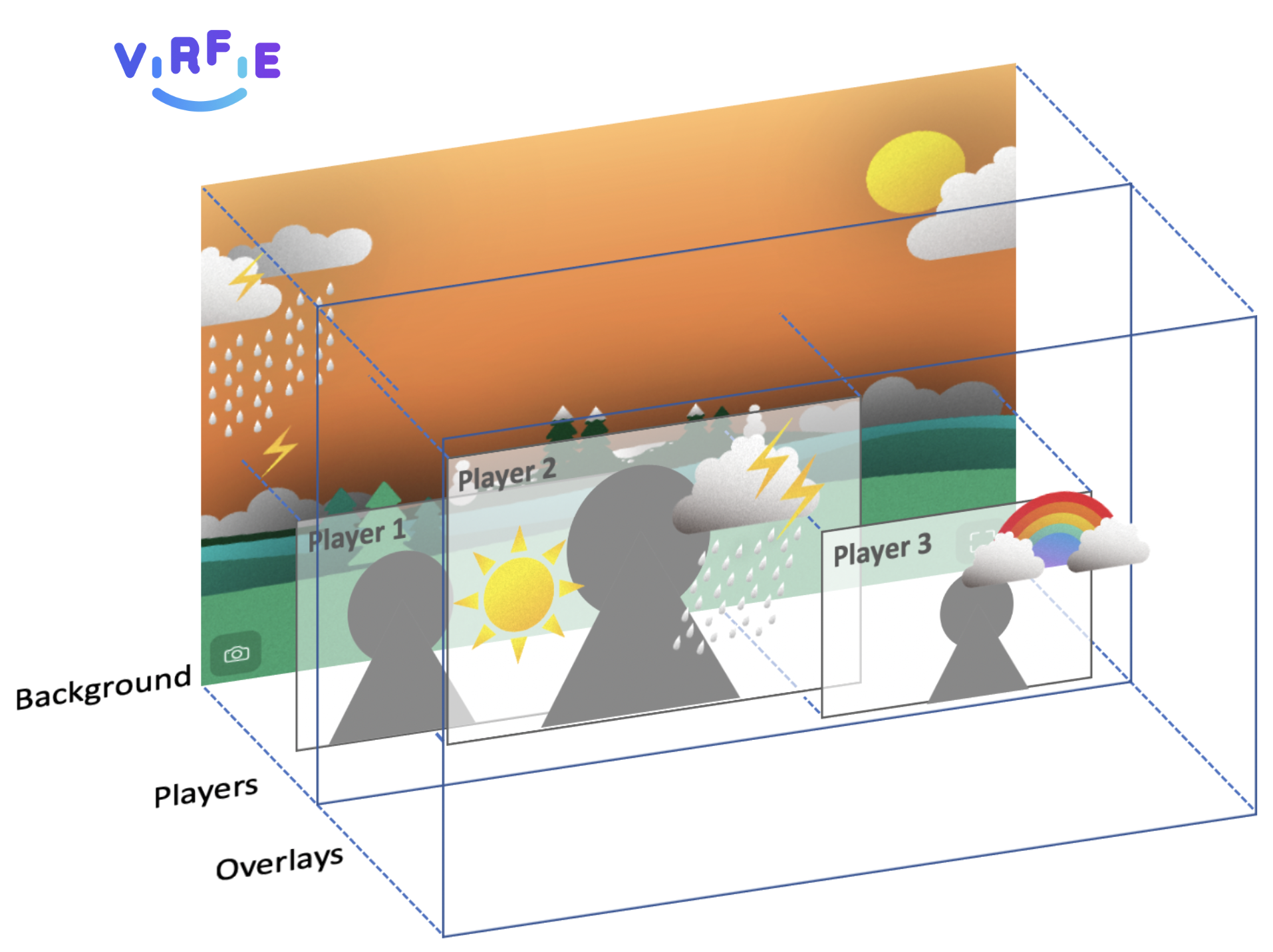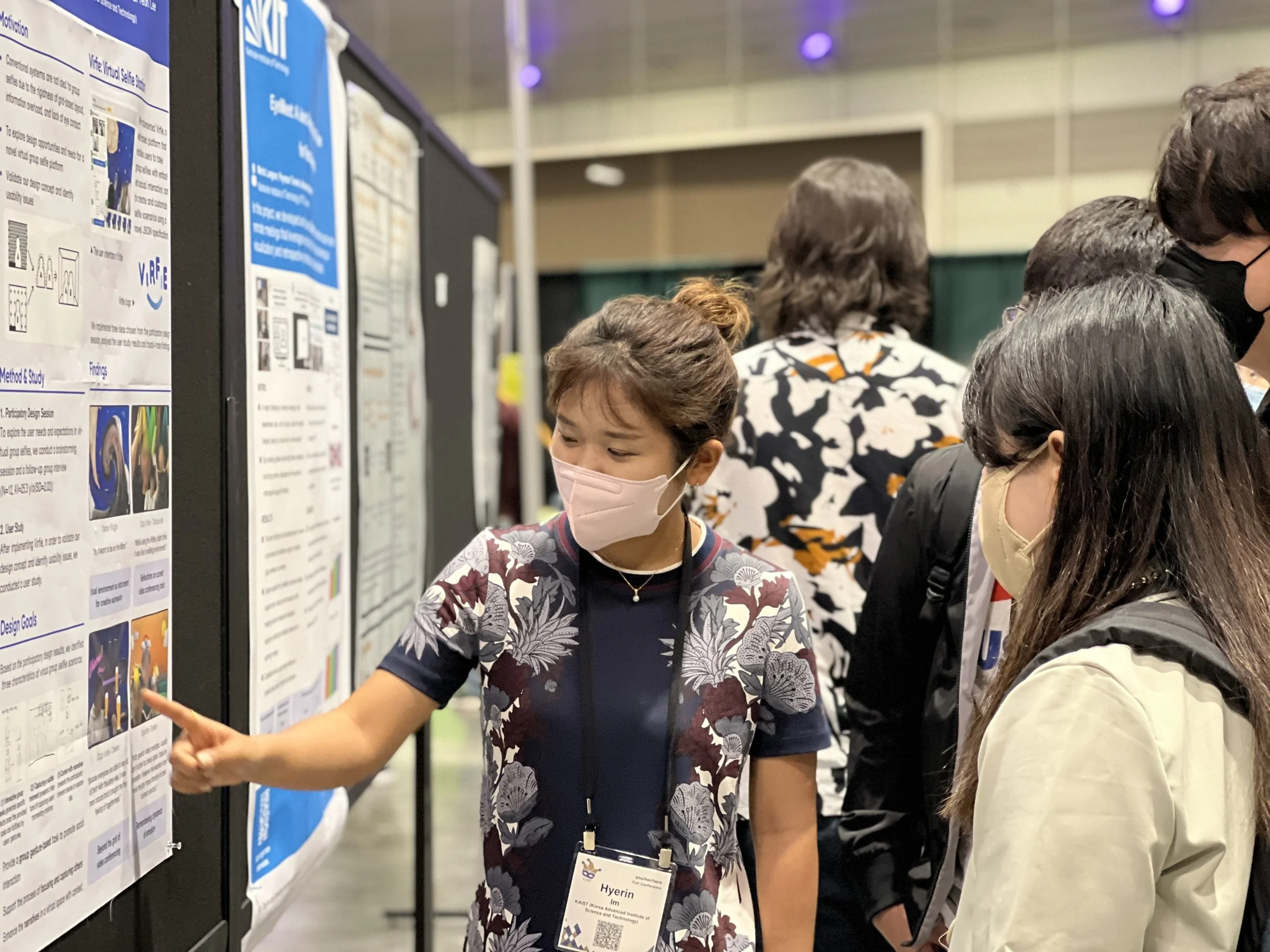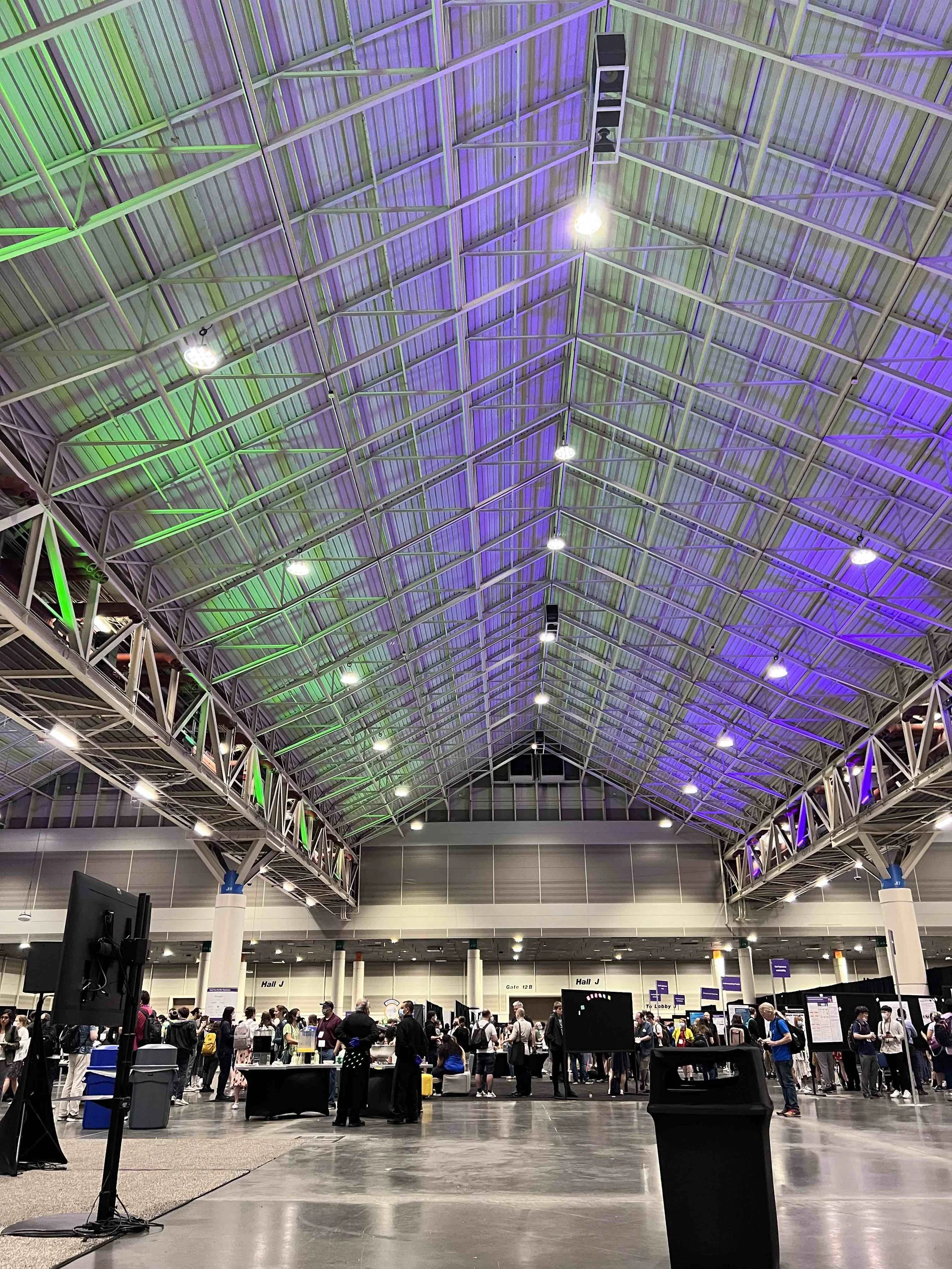Virfie: Virtual Selfie Station for Remote Togetherness
#User research #Qualitative research #Remote Togetherness
Role & Context: Participated as the first author and led the project, which was recognized at CHI 2022, one of the most prestigious HCI conferences in the world. (Link)
Introduction
“We are moving away from photography as a way of recording and storing the past, and instead of turning photography into a social medium in its own right.” - Kelsey, 08
Robin Kelsey and Blake Stimson. 2008. The meaning of photography. Clark Art Institute.
Background
During the COVID-19 pandemic, video conferencing systems are used as a tool for group selfies. However, conventional systems are not ideal for group selfies
Limitation 1. The Grid Views
Limitation 2. Video Fatigue
Limitation 3. Information Overload
Participatory Design
To explore design opportunities and needs for a novel virtual group selfie platform, we conducted a participatory design. Participants proposed sketches of various virtual group selfie ideas
Total participants: 12, AV: 25.3 y/o (SD = 2.02)
Collected Drawings:
Three Characteristics of Virtual Group Selfie Scenarios
Interactive group tasks
What if “Cheers” effect being triggered when all the beer glasses hold by users’ hands collide with each other?
P4
Capturing Subtle Moments
Split each member’s face into three pieces, and continuously create new faces by randomly combining the pieces!
P12
Context with Narratives
It would be fun to take a virtual trip with a friend who could not travel together!
P5
Virfie System
We implemented Virfie, a web-based platform that enables users to take group selfies with embodied social interaction, and to create and customize selfie scenarios using a novel JSON specification.
User Test
After implementing Virfie, in order to validate our design concept and identify usability issues we conducted a user study.
To simulate the feeling of physical remoteness, we separated the participants into different rooms. We allowed participants to freely take group selfies using the laptops we provided.
User Test Results
We implemented three ideas chosen from the participatory design session. We shared the link url and collected 480 virtual group selfie photos, video data of individual participants.3. Club Virfie
2. Emotion Tracker
1. Space wiggle
Space Wiggle promotes social interaction through a group gesture-based task. Participants gather on-screen, triggering a vortex effect that simulates falling into a black hole, enhancing the group selfie experience with a cosmic background.
Emotion tracker focuses on capturing participants without showing instant emotions. Instead, weather icons representing various emotions appear on users' faces every three seconds, adding a metaphorical layer to interaction.
Club virfie, enriches virtual narratives with context across three scenes: Club Entrance, Club Bar, and Dance Hall. At the Club Entrance, gathering participants trigger a polaroid photo capture. The flexible screen range for this interaction fosters communication as participants discuss and choose locations.
Findings
1. Beyond the grid of video conferencing
Alleviating Gaze Misalignment: By viewing all members together, participants felt more present in a shared virtual space, moving away from the isolation of individual boxes.
Enhancing Remote Togetherness: The illusion of sharing the same physical space improved participants' sense of unity. One participant noted that this spatial consistency and shared activities fostered greater intimacy.
2. Virtual Environment as an Instrument for Creative Expression
Virtual environment fostered creative expression. Participants actively engaged with the novelty of the space, with one even expressing a desire to interact with a graphical element in the background.
3. Remembering Dynamics of Emotion
Participants aimed to quickly grasp the emotional states of others.
They valued capturing transient emotions linked to particular experiences.



















